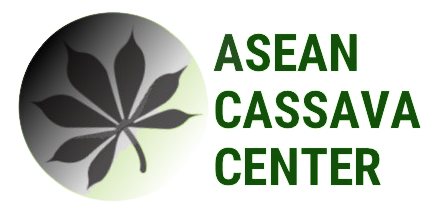Lao PDR: Current Situation of Cassava Cultivation
Cassava cultivation
Cassava, known as "Man Ton" in Laos, has become a crucial food crop for smallholder farmers in remote regions due to rising global demand and supportive government policies. Laos' tropical monsoon climate, with distinct wet and dry seasons and temperatures between 25-29ºC, provides an ideal environment for cassava cultivation. Cassava cultivation is widespread across Laos, covering over 112,000 hectares in 2020, producing approximately 3,684,744 tons of raw cassava. Leading provinces in cassava production include Xayabury, Salavan, Champasack, Borikhamxay, Xekong, Vientiane, Attapea, and Savannakhet. Various cassava varieties are cultivated, with KU 50 being the most common. Different varieties offer unique advantages, such as Rayong 9 for ethanol production, Rayong 11 for drought tolerance and starch content, and Rayong 72 for yield, stem quality, and drought resistance. Laos has excelled in cassava production, consistently surpassing neighboring countries like Thailand and Vietnam with average yields of 31.8 to 32.8 tons per hectare between 2016 and 2018. Nonetheless, the industry faces significant challenges, primarily related to diseases and pests, such as Cassava Witches Broom Disease and whiteflies. Addressing these challenges is essential for sustaining and improving cassava production in Laos.
Diseases and pests of cassava
Cassava mosaic disease, caused by Begomovirus and transmitted by whiteflies, affects both cassava crops and other crop species, posing challenges for farmers. Furthermore, the exchange of contaminated planting stems and consecutive years of cassava planting increase disease risks. Additionally, inadequate support services, limited technological advancements, low farmer awareness, and environmental and health concerns need addressing.
Government Initiatives
Laos encounters both opportunities and barriers in cassava cultivation due to government policies. Challenges include an unstable price and marketing system and high logistic costs driven by transportation issues. Natural disasters like floods and droughts pose risks to cassava production. Nonetheless, Laos aims to export cassava to the EU market with tax benefits and sees potential through the Lao-China railway for exports to China. To address these challenges, initiatives such as the Alliance of Biodiversity International and CIAT's cassava stem multiplication center are combatting diseases. Research and development investments will prioritize production improvement, processing, quality control, and pest management. Farmers' knowledge gaps will be addressed through training and capacity-building programs.
SWOT Analysis
The cassava industry in Laos exhibits several strengths, including high cassava production and yield of approximately 32.8 tons per hectare due to the rich ingredients in the farmland. Additionally, there is sufficient available land for new cassava cultivation. However, the sector faces significant weaknesses, including a lack of innovation and technology to increase cassava yield, insufficient support services for farmers, limited knowledge among farmers, and a lack of awareness of environmental and health issues. Nevertheless, there are promising opportunities for the Lao cassava industry. Laos has the policy to export cassava to the EU market tax-free as a developing country, and the Lao-China railway can reduce logistic costs for exporting to China directly. Investment in research and development (R&D) is crucial for production improvement, processing, quality control, and pest and disease management. Increasing training and capacity building for cassava farmers can help address these issues.
On the other hand, there are threats to the sustainability of cassava production, including price fluctuations, high logistic costs, natural disasters like floods and droughts, and the spread of diseases through the common practice of using stem cuttings from previous crops. Managing these threats will be essential for the long-term success of the Lao cassava industry.
In conclusion, Laos has made progress in cassava cultivation but grapples with issues related to diseases, farmer knowledge, and market stability. Government policies and international partnerships offer avenues for boosting cassava production and overcoming these obstacles. Focus should be on enhancing technology transfer, expanding farmer education, and ensuring sustainable cassava cultivation to drive economic growth and food security in Laos.
